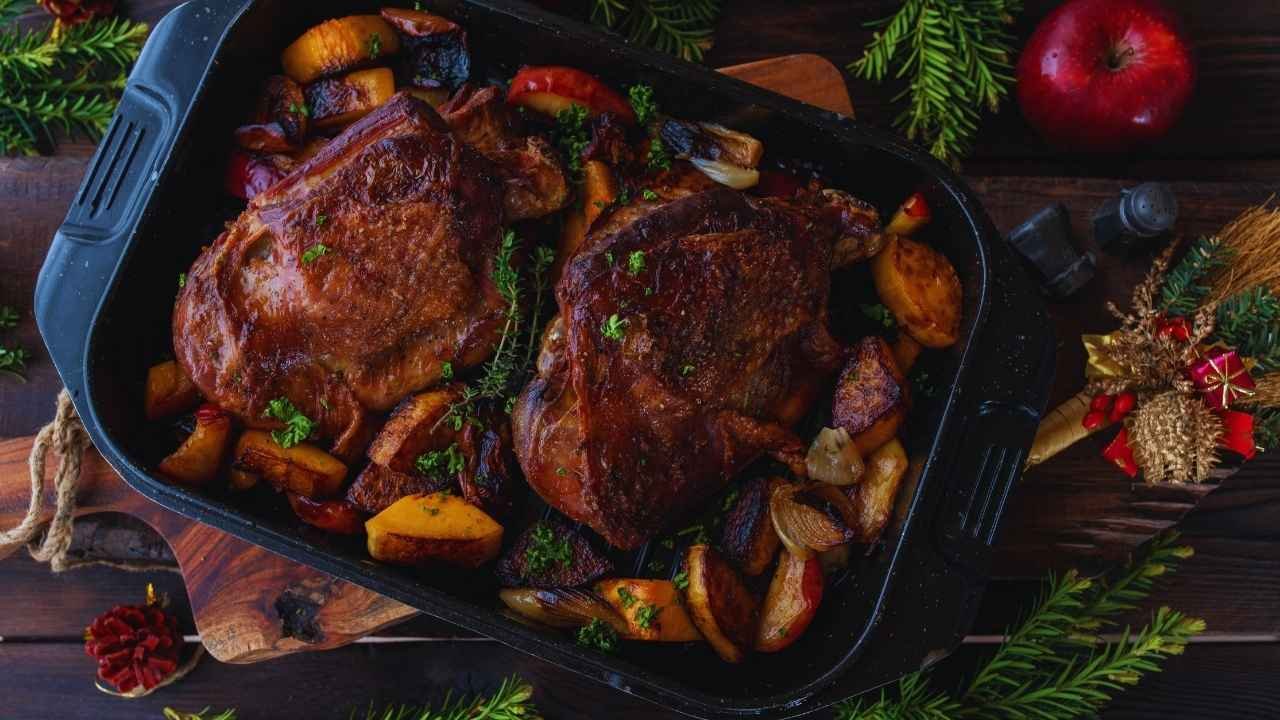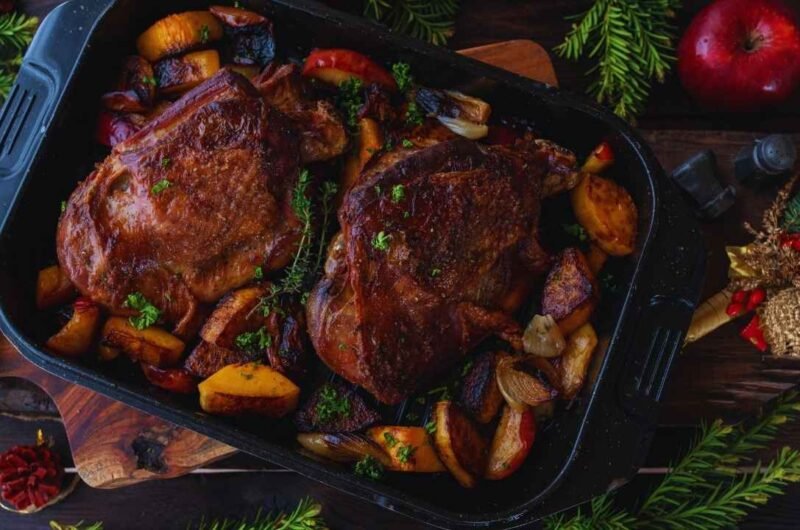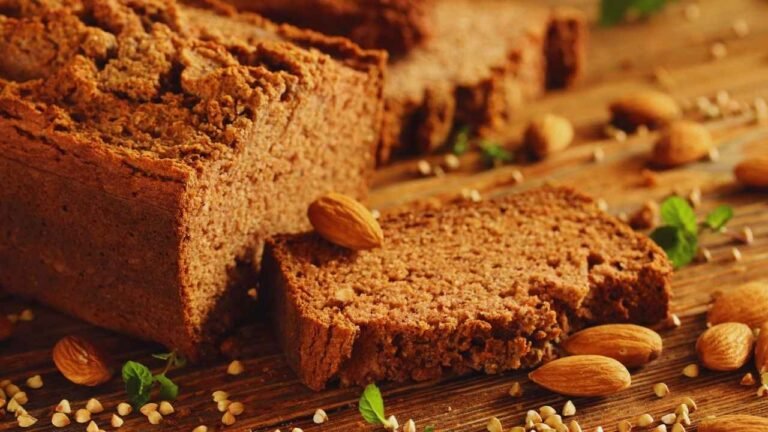How to Make a Delicious Beef Shank Recipe: Step-by-Step Guide
Beef shank delivers some of the most amazing flavors among meat cuts that many home cooks overlook. The right beef shank recipe can turn this tough cut into a tender, juicy dish. Its rich marbling and connective tissue slowly break down as it cooks and create a deeply satisfying meal with strong flavors.
The right cooking techniques will help you create amazing beef shank dishes, ranging from classic braised recipes to modern pressure-cooker versions. This detailed guide shows you everything you need to know about picking quality cuts and cooking methods. You’ll find expert tips and proven techniques that guarantee tender results. The guide has sections with step-by-step instructions that will help you make restaurant-quality dishes in your kitchen.
What is Beef Shank?
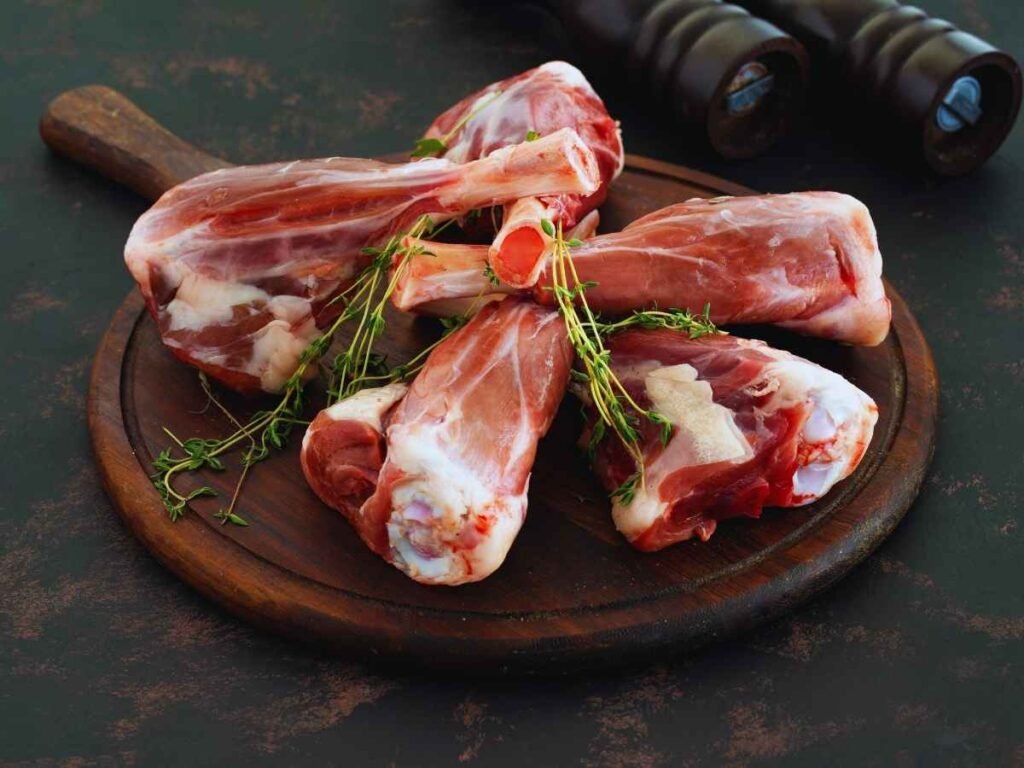
Beef shank comes from the lower part of a cow’s legs and is a chance to explore interesting cooking methods. This cut has distinct features and goes by several names in various cooking traditions.
Definition and location on the cow
Beef shank represents the leg portion of the cow that sits right above the knee or hock. Butchers source this cut from both front legs (fore shank) and back legs (hind shank). They typically slice it horizontally into 1-inch thick portions. Each slice showcases a unique circular pattern where leg bone sits at the center, surrounded by dense muscle meat. The bone’s interior contains rich, flavorful marrow that adds depth to dishes.
Other names for beef shank
Butchers and cooks across different regions use several names to describe beef shank:
Common Name Regional/Alternative Name Fore Shank Leg Boil Hind Shank Shank Meat Cross-cut Shank Soup Bones Osso Bucco Italian-style Shank Characteristics of beef shank meat
Beef shank has unique qualities that set it apart from other beef cuts:
- Texture and Composition:
- Dense muscle structure due to frequent leg movement
- High concentration of connective tissue
- Rich collagen content around the meat
- Contains marrow-filled bone center
The meat’s tough texture comes from its leg location where the cow moves constantly. This movement creates an intense flavor profile. The meat has plenty of connective tissue that makes it tough at first, but breaks down during cooking to create rich, gelatinous textures and deep flavors.
Beef shank’s high collagen content makes it a prized cut. The collagen turns into gelatin as it cooks. This process makes the meat tender and boosts its nutritional value. The cut becomes an excellent source of protein and other nutrients. Proper cooking techniques like braising or slow-cooking can turn this tough cut into a tender, flavorful dish that works well in many recipes.
Preparing Beef Shank for Cooking
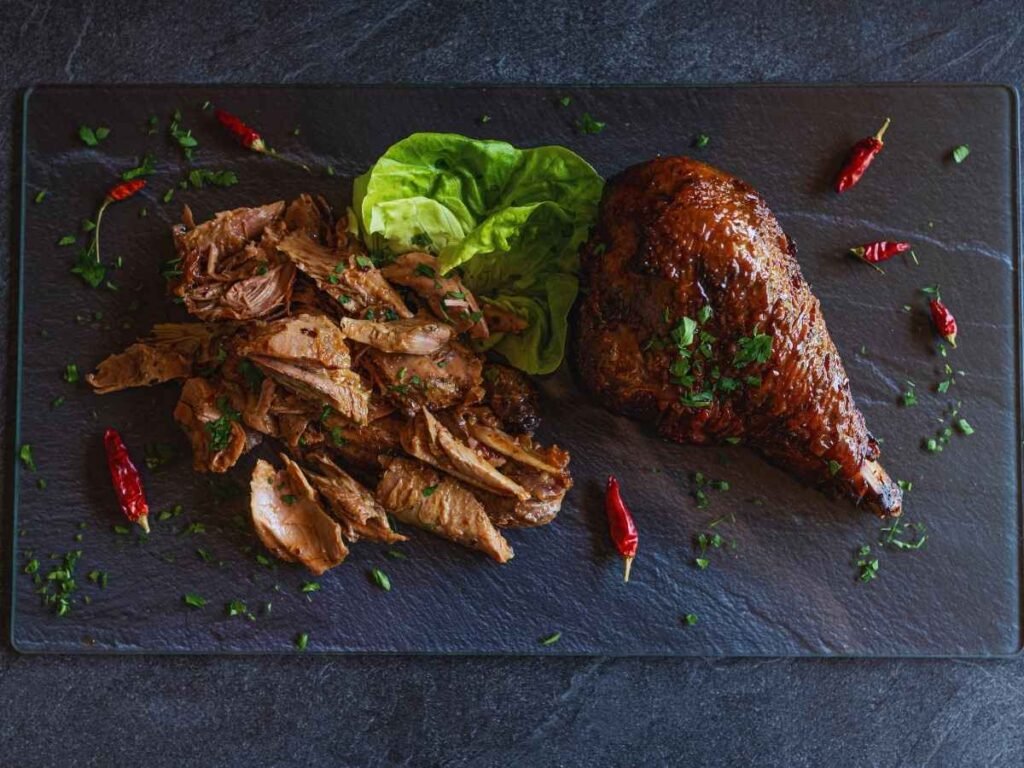
The right preparation makes a significant difference in your beef shank’s tenderness and flavor. The meat needs proper preparation that will give a perfect base for braising, slow cooking, or pressure cooking methods.
Choosing quality beef shanks
Quality beef shanks remain available at local butcher shops and specialty meat markets despite their limited visibility in grocery stores. Shoppers should evaluate these essential qualities at the time of selecting beef shanks:
Quality Indicator What to Look For Color Bright red, consistent throughout Marbling Good distribution of fat content Bone Clean, intact with healthy marrow Texture Firm to the touch Size 10 ounces to 2 pounds per portion Trimming and seasoning
Proper trimming makes a significant difference in your beef shank recipe results. The preparation steps should follow this sequence:
- Pat the meat dry with paper towels
- Remove the silver skin and excess fat layers
- Trim away any loose bits of meat that could burn
- Use a sharp 6-inch filet or boning knife to make precise cuts
- Work carefully between meat and fat layers
A simple mix of kosher salt, black pepper, and granulated garlic creates the perfect seasoning blend. Many chefs add olive oil as a binder, especially when you have minimal fat cap. This technique helps create better caramelization as the meat cooks.
Tying with kitchen twine (optional)
Kitchen twine helps beef shanks keep their shape as they cook and will give a more even heat distribution. This step becomes especially when you have roasting in mind or the presentation needs to look good. Here’s how to do it:
- Place the twine under the meat
- Make a loop around two fingers to control tension
- Wrap the twine around the meat with steady pressure
- Tie it off with a butcher’s knot
- Cut away extra twine
The twine adds structure that keeps your meat from falling apart at the time of cooking. But you can skip this step if you’re making a slow-cooked dish where the meat should naturally break down.
Let your seasoned meat sit at room temperature for about 30 minutes. This rest time lets the meat cook evenly and helps the seasonings work better on the surface.
Cooking Methods for Tender Beef Shanks
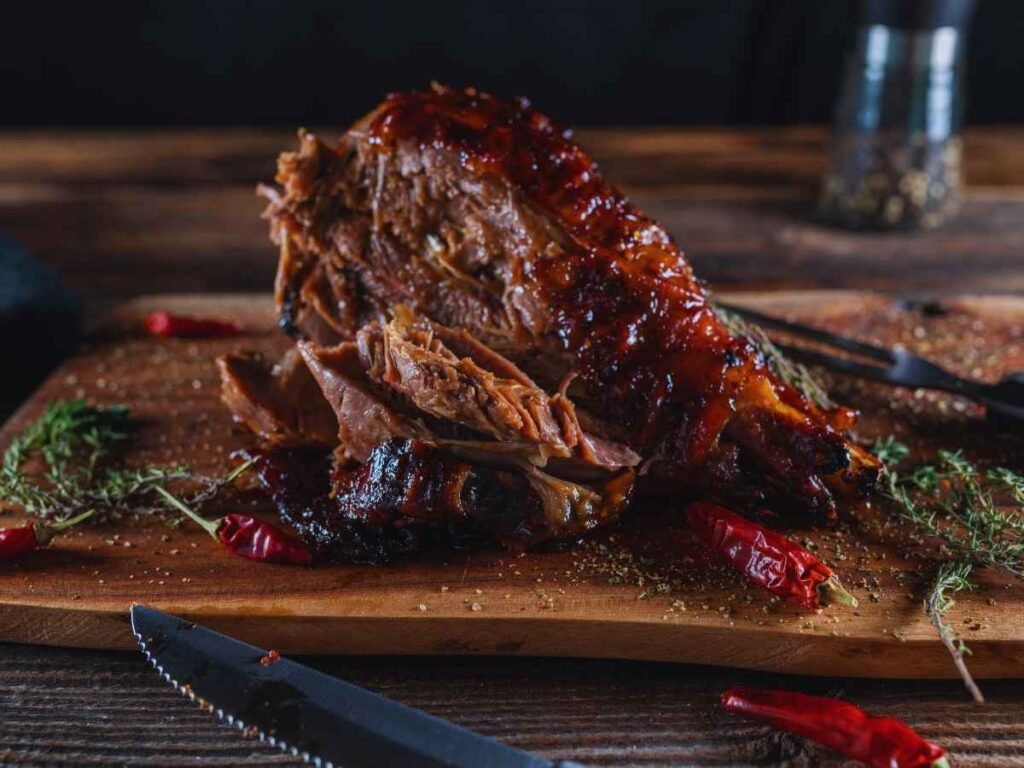
Tough beef shanks need the right cooking method and proper techniques to become tender and flavorful. Different cooking methods have their own advantages and follow the basic rule of low-and-slow cooking with moist heat.
Braising
Braising is a traditional way to prepare beef shank recipes that creates deep, complex flavors. The process starts with searing the meat at high temperature. The next step involves slow cooking in liquid at 300°F (150°C). The meat needs partial submersion in liquid so both direct heat and steam can tenderize it. The shanks become fork-tender after about 3½ hours, and the meat’s connective tissues turn into rich gelatin.
Key Indicators of Doneness:
- A fork slides into the meat without resistance
- The meat starts pulling away from the bone
- The meat’s internal temperature hits 190-195°F
Slow cooking
Slow cookers will give a convenient way to cook and deliver tender results every time. Your food cooks unattended for 6 hours on low heat. The steady, controlled temperature helps tough fibers break down naturally without overcooking.
Setting Cooking Time Liquid Level Low 6-8 hours Halfway up shanks High 4-5 hours Halfway up shanks Pressure cooking
Pressure cookers offer the quickest way to prepare beef shank recipes. This method cuts down cooking time by a lot and keeps the meat tender and flavorful. High pressure pushes moisture deep into the meat and breaks down tough fibers in just 45 minutes to an hour.
The best pressure cooking results need these steps:
- Sear the shanks before pressure cooking
- Cook at high pressure for 30-36 minutes
- Let it release naturally for 15 minutes
- Quick release any remaining pressure
Whatever cooking method you pick, patience is vital. The meat must have enough time to break down its tough fibers and release its rich flavors. Monitoring the cooking process helps prevent overcooking that leads to dry, stringy meat. Your perfect result should be meat that’s tender enough to eat with a spoon while keeping its shape intact.
Delicious Beef Shank Recipe
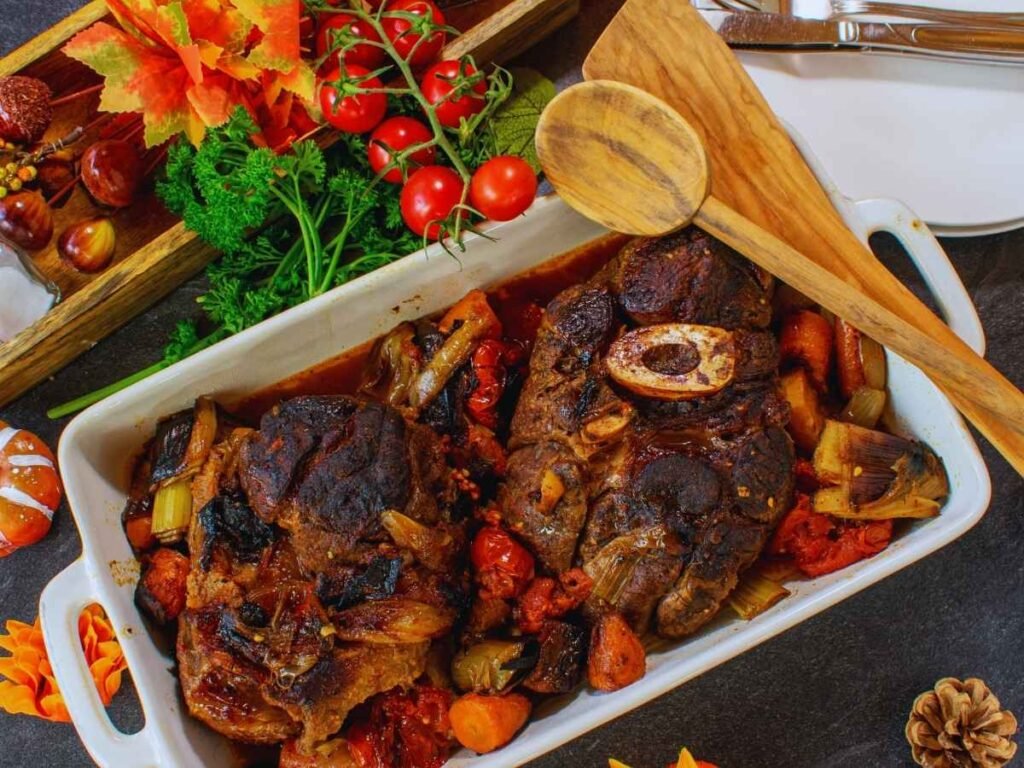
A perfect beef shank recipe needs the right ingredients and proper technique. The meat starts tough but becomes tender and full of flavor. Your guests will love this classic dish.
Recipe Ingredients
Main Ingredients Quantity Aromatics & Seasonings Quantity Beef shanks 2-3 pieces (1-inch thick) Garlic cloves 4-5 whole All-purpose flour 1/2 cup Onions 2 medium Olive oil 2 tablespoons Carrots 2-3 large Beef broth 2 cups Bay leaves 2-3 Dry white wine 1 cup Fresh thyme 3-4 sprigs Diced tomatoes 1 can (14 oz) Fresh rosemary 2 sprigs Step-by-step cooking instructions
- Original Preparation
- Pat beef shanks dry with paper towels
- Season generously with salt and pepper
- Dredge in flour and shake off excess
- Searing Process
- Heat olive oil in a large Dutch oven at medium-high heat
- Sear shanks until golden brown (2-3 minutes each side)
- Set shanks aside
- Building Flavors
- Lower heat to medium
- Cook onions, carrots, and celery until soft (4-5 minutes)
- Add garlic, rosemary, and thyme and cook until aromatic
- Braising Setup
- Pour in tomatoes, broth, and wine
- Place shanks back in pot
- Let it simmer, cover, and move to preheated 300°F oven
- Cooking Duration
- Cook for 2.5-3 hours until meat becomes fork-tender
- Rotate shanks halfway through
- Monitor liquid levels as it cooks
Tips for perfect results
Temperature Management:
- Your oven temperature should stay steady
- The lid needs to stay closed while cooking
- Room temperature meat works best before cooking starts
Liquid Essentials:
- The liquid should cover half the meat
- Hot liquid can be added when levels get low
- You can strain and reduce the sauce before serving
Testing for Doneness:
- A fork should easily pull the meat apart
- The meat’s internal temperature must reach 190°F
- The bone will feel loose when the meat is ready
A pressure cooker offers another great option. Set it to high pressure for 60 minutes and let it release naturally. This method delivers the same tender results and concentrated flavors you expect from traditional braised beef shank recipes.
Serving and Storing Beef Shanks
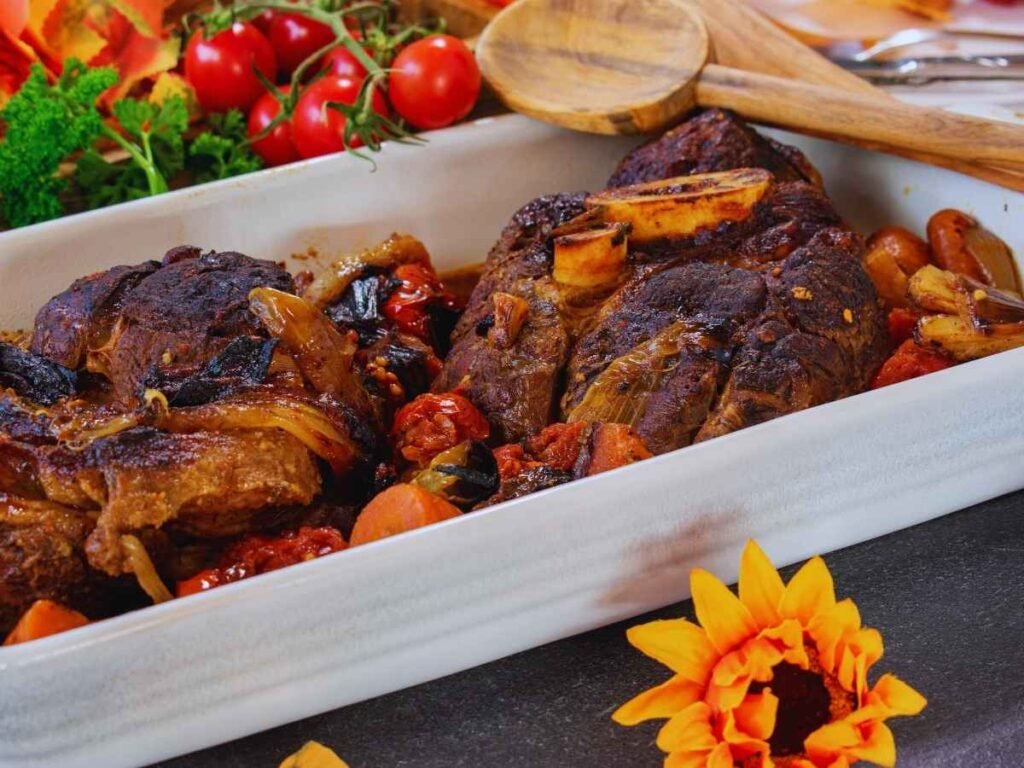
A well-prepared beef shank offers more than just cooking options. This versatile dish shines through its serving possibilities and storage methods. The right presentation and storage techniques help you enjoy its rich flavors immediately or save it perfectly for later meals.
Accompaniment suggestions
Your perfectly cooked beef shank needs the right side dishes to bring out its rich flavors and tender texture. This hearty dish tastes amazing with several options that soak up the delicious sauce.
Traditional Pairings:
- Creamy mashed potatoes or cauliflower mash
- Buttered polenta or risotto
- Crusty artisan bread
- Seasoned rice or orzo pasta
- Fall kale salad or pomegranate feta salad
- Roasted broccolini
The natural sauce from braising makes starchy sides a perfect match. Cauliflower-based dishes provide similar satisfaction for anyone watching their carbs.
Proper storage methods
The right storage methods will give a way to keep beef shanks fresh and safe to enjoy later. These storage guidelines help preserve the dish’s flavor and texture:
Storage Method Temperature Duration Container Type Refrigeration 34-40°F 3-5 days Airtight container Freezing 0°F or below 2-3 months Freezer-safe container Here’s how to store braised beef shanks properly:
- Let the dish cool at room temperature for about an hour
- Remove any excess fat that rises to the top after chilling
- Keep the meat and sauce together so it stays moist
- Make sure your containers seal well to avoid freezer burn
- Write the storage date and contents on each container’s label
Reheating leftovers
The right way to reheat beef shanks will keep them tender and flavorful. Several methods work well, but you need to watch the temperature and timing carefully:
Oven Method:
- Preheat oven to 250-300°F
- Place shanks in an oven-safe dish
- Add a splash of white wine or water
- Cover tightly with foil
- Heat until warmed through (approximately 20-30 minutes)
Stovetop Method:
- Place shanks and liquid in a saucepan
- Heat over low temperature
- Stir occasionally for even warming
- Cover while heating to keep moisture in
Microwave Method:
- Use medium power setting
- Heat in 30-40 second intervals
- Cover the container
- Stir between intervals
- Check temperature before serving
Your frozen shanks should thaw completely in the refrigerator overnight before you try any of these reheating methods. This step will give a more even heat distribution and maintain the meat’s texture. You might need to stir the sauce while reheating to keep it from separating and maintain an even temperature throughout.
How to Make a Delicious Beef Shank Recipe: Step-by-Step Guide
Course: LunchCuisine: AmericanDifficulty: Easy6
servings30
minutes3
hours500
kcalThis tender and flavorful beef shank recipe transforms a tough cut of meat into a melt-in-your-mouth dish. Braised in a savory broth with vegetables, herbs, and wine, the beef becomes perfectly tender, making it a hearty and delicious meal for any occasion.
Ingredients
2-3 beef shanks (1-inch thick)
2 tbsp olive oil
1/2 cup flour
4-5 garlic cloves
2 onions (chopped)
2-3 carrots (chopped)
2 cups beef broth
1 cup white wine
1 can (14 oz) diced tomatoes
2-3 bay leaves
Fresh thyme, rosemary
Salt & pepper to taste
Directions
- Prepare Meat: Pat beef dry, season with salt and pepper, and dredge in flour.
- Sear Beef: Heat oil in a Dutch oven, sear beef on all sides, then set aside.
- Cook Vegetables: Sauté onions, carrots, and garlic in the same pot for 4-5 minutes.
- Add Liquids: Stir in tomatoes, beef broth, wine, and herbs. Return beef to pot.
- Braise: Cover and bake at 300°F for 2.5-3 hours until fork-tender.
- Serve: Remove beef, reduce sauce if desired, and serve with sides.
Recipe Video
Notes
- Beef shanks need slow cooking to become tender.
Ensure the meat reaches 190-195°F for perfect doneness.
Rest beef at room temperature before cooking.
Leftovers store in the fridge for 3-5 days or freeze for up to 3 months. Reheat gently.
Conclusion
Becoming skilled at cooking beef shanks can turn this tough meat cut into a delicious, tender dish that deserves a spot on any dinner table. The right selection and preparation techniques combined with patient cooking will help you create restaurant-quality meals from this budget-friendly cut. Beef shank’s rich marbling, collagen content, and flavorful marrow work together to create deep, complex flavors that reward careful preparation.
Cooks can tackle beef shank recipes with confidence once they understand these basics. They can choose their favorite method – traditional braising, slow cooking, or pressure cooking to get great results. Beef shanks are perfect for meal planning because they store and reheat well. These versatile cuts make excellent family dinners when served with complementary side dishes. With proper storage, you can enjoy multiple satisfying meals that prove tough cuts become tender and delicious when cooked right.
FAQs
What is the most effective cooking method for beef shanks?
Beef shanks are best cooked using low and slow methods in a moist environment, such as braising. This method is ideal due to the tough nature of the meat, which includes a significant amount of connective tissue.
How long should beef shanks be cooked to become tender?
Beef shanks require a considerable amount of cooking time to become tender due to their dense connective tissue. Even when braised, it can take around nine to ten hours for them to fully tenderize.
Is it possible to cook beef shank like a regular steak?
While beef shank can resemble a well-marbled steak in appearance, it is too tough to be grilled like typical steaks. Instead, beef shanks are best when braised, similar to chuck steaks, to achieve a tender texture.

